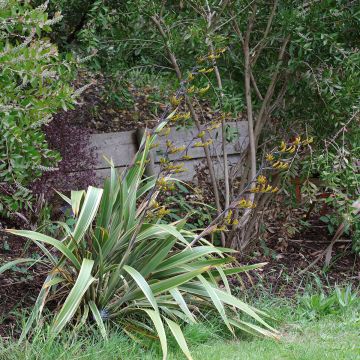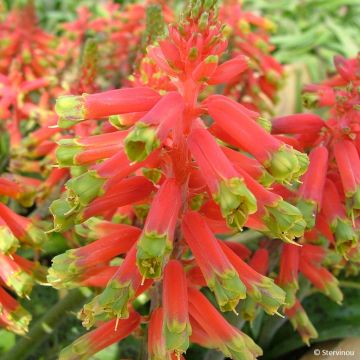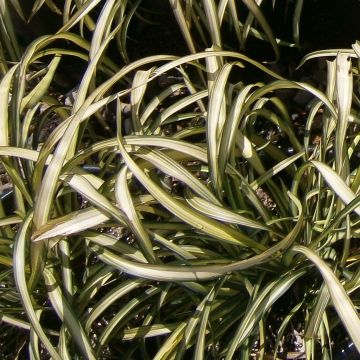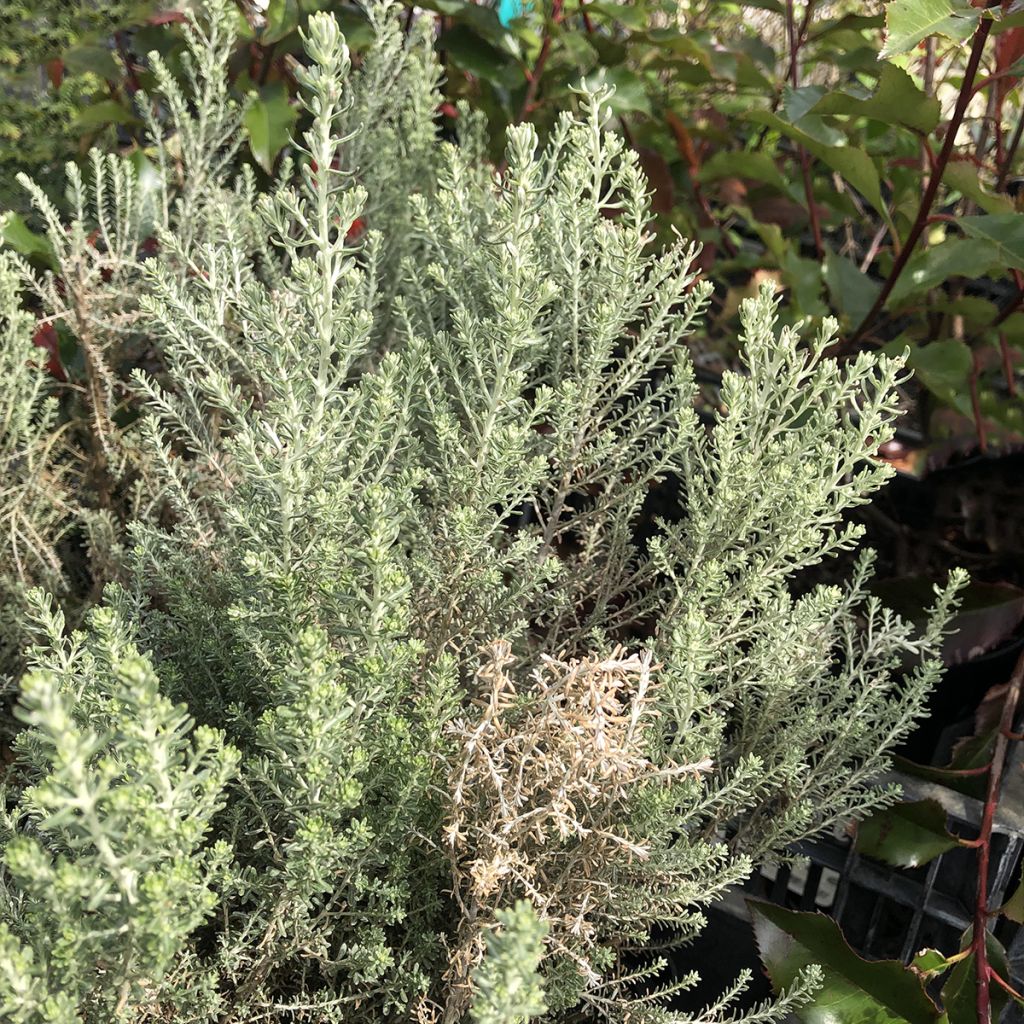

Cassinia retorta Ward Silver


Cassinia retorta Ward Silver


Cassinia retorta Ward Silver
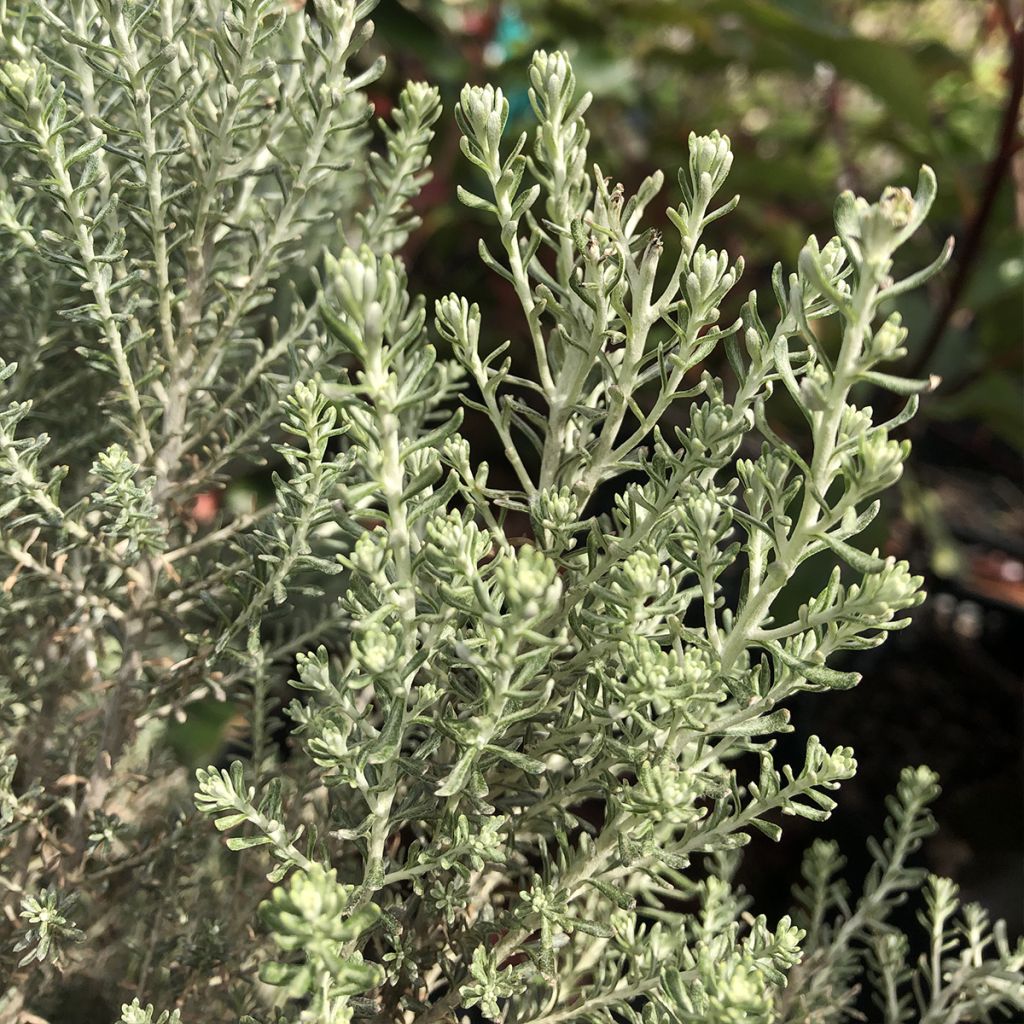

Cassinia retorta Ward Silver
Cassinia retorta Ward Silver
Cassinia retorta Ward Silver
This item cannot be shipped to the selected country
Delivery charge from €5.90
More information
Schedule delivery date,
and select date in basket
This plant carries a 24 months recovery warranty
More information
We guarantee the quality of our plants for a full growing cycle, and will replace at our expense any plant that fails to recover under normal climatic and planting conditions.
From €5.90 for pickup delivery and €6.90 for home delivery
Express home delivery from €8.90.
Does this plant fit my garden?
Set up your Plantfit profile →
Description
Cassinia Ward Silver is an evergreen New Zealand bush with the appearance of a large silver heather, that thrives in coastal gardens. The plant forms a luminous, architectural mass in just a few years, maintaining a beautiful presence throughout the year despite wind, cold, and drought. Its cream-white flowering emits a delightful honey scent, and the vegetation releases a cake-like aroma in warm weather, according to some observers. Tolerating both acidic and limestone soils and hardy down to -12°C (10.4°F), this Australian shrub only requires sunlight and well-drained, rather poor, soil.
Cassinia Ward Silver (also known as Ozothamnus leptophyllus) belongs to the Asteraceae family, closely related to Olearia, Senecio, and Helichrysum. The species is native to New Zealand, specifically the North Island, where it can be found on dunes and sandy terrains. 'Ward Silver' is a fast-growing shrub with a slightly disorderly habit, reaching an average height of 1.75m (6ft) and a spread of 1.30m (4ft) in 10 years. Its lifespan is relatively short. The entire plant is covered in silver-white fuzz. The branches bear small, tight, thin, rigid leaves that are 5mm (0.2 in) long, curved, and almost stalkless. They are smooth on the top but densely covered in white fuzz on the underside. This beautiful foliage remains evergreen in winter. Flowering occurs from May to August depending on the region, usually in July in average climates. It consists of numerous cream-white flower heads resembling tiny daisies, arranged in small terminal clusters that are themselves gathered in umbels. This pleasantly scented flowering attracts many pollinating insects. After pollination, fruits with feathery plumes are formed, which are known as akènes.
Cassinia retorta Ward Silver naturally finds a place in a coastal garden, where it can be used as an informal hedge, in shrub borders, or in a large rockery. It can be combined with other evergreen coastal shrubs that appreciate the same environments: Callistemon rigidus, cistus, cistus, Pistacia lentiscus, Pittosporum tobira, Medicago arborea, Phlomis fruticosa, laurier-rose, Olearia traversii, Atriplex... It is perfectly suited to gardens in coastal regions. However, this shrub is hardy and tolerant enough to be planted further inland, provided it is given a sheltered position, away from cold winds.
Report an error about the product description
Cassinia retorta Ward Silver in pictures


Plant habit
Flowering
Foliage
Botanical data
Cassinia
retorta
Ward Silver
Asteraceae
Oceania
Other Shrubs A to Z
Planting and care
Cassinia Ward Silver should be planted in full sun, in any well-drained soil, from acidic to limestone, even sandy or rocky. Avoid soils that are too rich in compost, mix your garden soil with a little fine gravel to lighten it if necessary. It tolerates the salty and sandy soils of the seaside. Its resistance to summer drought is quite good and its hardiness allows it to withstand short frost of around -12°C (10.4 °F) when mature, in very well-drained soil. Water generously at planting, then regularly during the first two or three summers if it is very dry. Afterwards, this bush will generally be happy with rainwater. Prune lightly after flowering, this will promote a dense habit while removing faded flowers that are not very aesthetically pleasing. However, be careful not to prune on old wood below the lowest leaf (as with lavenders and rosemary).
Planting period
Intended location
Care
-
, onOrder confirmed
Reply from on Promesse de fleurs
Evergreen shrubs
Haven't found what you were looking for?
Hardiness is the lowest winter temperature a plant can endure without suffering serious damage or even dying. However, hardiness is affected by location (a sheltered area, such as a patio), protection (winter cover) and soil type (hardiness is improved by well-drained soil).

Photo Sharing Terms & Conditions
In order to encourage gardeners to interact and share their experiences, Promesse de fleurs offers various media enabling content to be uploaded onto its Site - in particular via the ‘Photo sharing’ module.
The User agrees to refrain from:
- Posting any content that is illegal, prejudicial, insulting, racist, inciteful to hatred, revisionist, contrary to public decency, that infringes on privacy or on the privacy rights of third parties, in particular the publicity rights of persons and goods, intellectual property rights, or the right to privacy.
- Submitting content on behalf of a third party;
- Impersonate the identity of a third party and/or publish any personal information about a third party;
In general, the User undertakes to refrain from any unethical behaviour.
All Content (in particular text, comments, files, images, photos, videos, creative works, etc.), which may be subject to property or intellectual property rights, image or other private rights, shall remain the property of the User, subject to the limited rights granted by the terms of the licence granted by Promesse de fleurs as stated below. Users are at liberty to publish or not to publish such Content on the Site, notably via the ‘Photo Sharing’ facility, and accept that this Content shall be made public and freely accessible, notably on the Internet.
Users further acknowledge, undertake to have ,and guarantee that they hold all necessary rights and permissions to publish such material on the Site, in particular with regard to the legislation in force pertaining to any privacy, property, intellectual property, image, or contractual rights, or rights of any other nature. By publishing such Content on the Site, Users acknowledge accepting full liability as publishers of the Content within the meaning of the law, and grant Promesse de fleurs, free of charge, an inclusive, worldwide licence for the said Content for the entire duration of its publication, including all reproduction, representation, up/downloading, displaying, performing, transmission, and storage rights.
Users also grant permission for their name to be linked to the Content and accept that this link may not always be made available.
By engaging in posting material, Users consent to their Content becoming automatically accessible on the Internet, in particular on other sites and/or blogs and/or web pages of the Promesse de fleurs site, including in particular social pages and the Promesse de fleurs catalogue.
Users may secure the removal of entrusted content free of charge by issuing a simple request via our contact form.
The flowering period indicated on our website applies to countries and regions located in USDA zone 8 (France, the United Kingdom, Ireland, the Netherlands, etc.)
It will vary according to where you live:
- In zones 9 to 10 (Italy, Spain, Greece, etc.), flowering will occur about 2 to 4 weeks earlier.
- In zones 6 to 7 (Germany, Poland, Slovenia, and lower mountainous regions), flowering will be delayed by 2 to 3 weeks.
- In zone 5 (Central Europe, Scandinavia), blooming will be delayed by 3 to 5 weeks.
In temperate climates, pruning of spring-flowering shrubs (forsythia, spireas, etc.) should be done just after flowering.
Pruning of summer-flowering shrubs (Indian Lilac, Perovskia, etc.) can be done in winter or spring.
In cold regions as well as with frost-sensitive plants, avoid pruning too early when severe frosts may still occur.
The planting period indicated on our website applies to countries and regions located in USDA zone 8 (France, United Kingdom, Ireland, Netherlands).
It will vary according to where you live:
- In Mediterranean zones (Marseille, Madrid, Milan, etc.), autumn and winter are the best planting periods.
- In continental zones (Strasbourg, Munich, Vienna, etc.), delay planting by 2 to 3 weeks in spring and bring it forward by 2 to 4 weeks in autumn.
- In mountainous regions (the Alps, Pyrenees, Carpathians, etc.), it is best to plant in late spring (May-June) or late summer (August-September).
The harvesting period indicated on our website applies to countries and regions in USDA zone 8 (France, England, Ireland, the Netherlands).
In colder areas (Scandinavia, Poland, Austria...) fruit and vegetable harvests are likely to be delayed by 3-4 weeks.
In warmer areas (Italy, Spain, Greece, etc.), harvesting will probably take place earlier, depending on weather conditions.
The sowing periods indicated on our website apply to countries and regions within USDA Zone 8 (France, UK, Ireland, Netherlands).
In colder areas (Scandinavia, Poland, Austria...), delay any outdoor sowing by 3-4 weeks, or sow under glass.
In warmer climes (Italy, Spain, Greece, etc.), bring outdoor sowing forward by a few weeks.












































